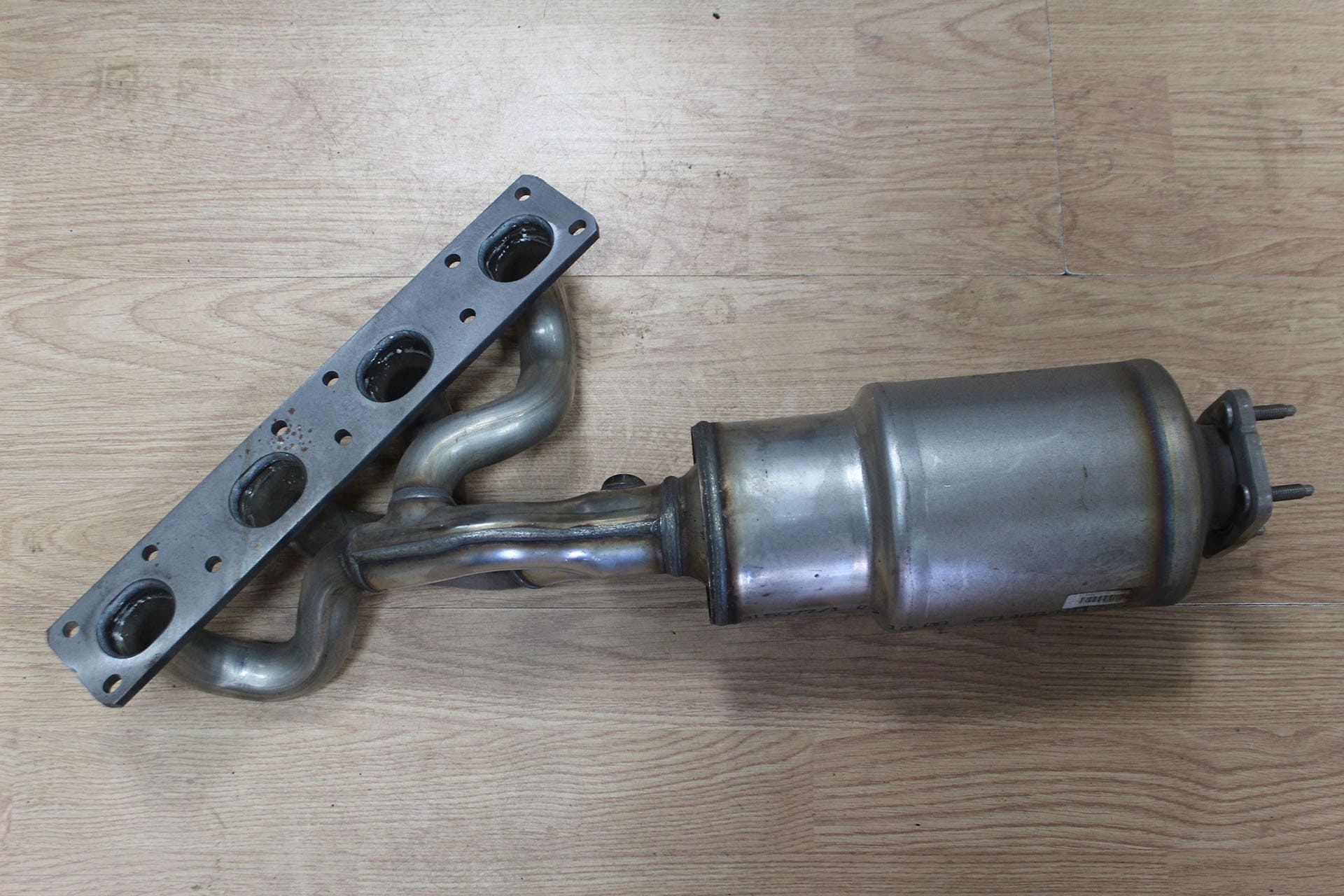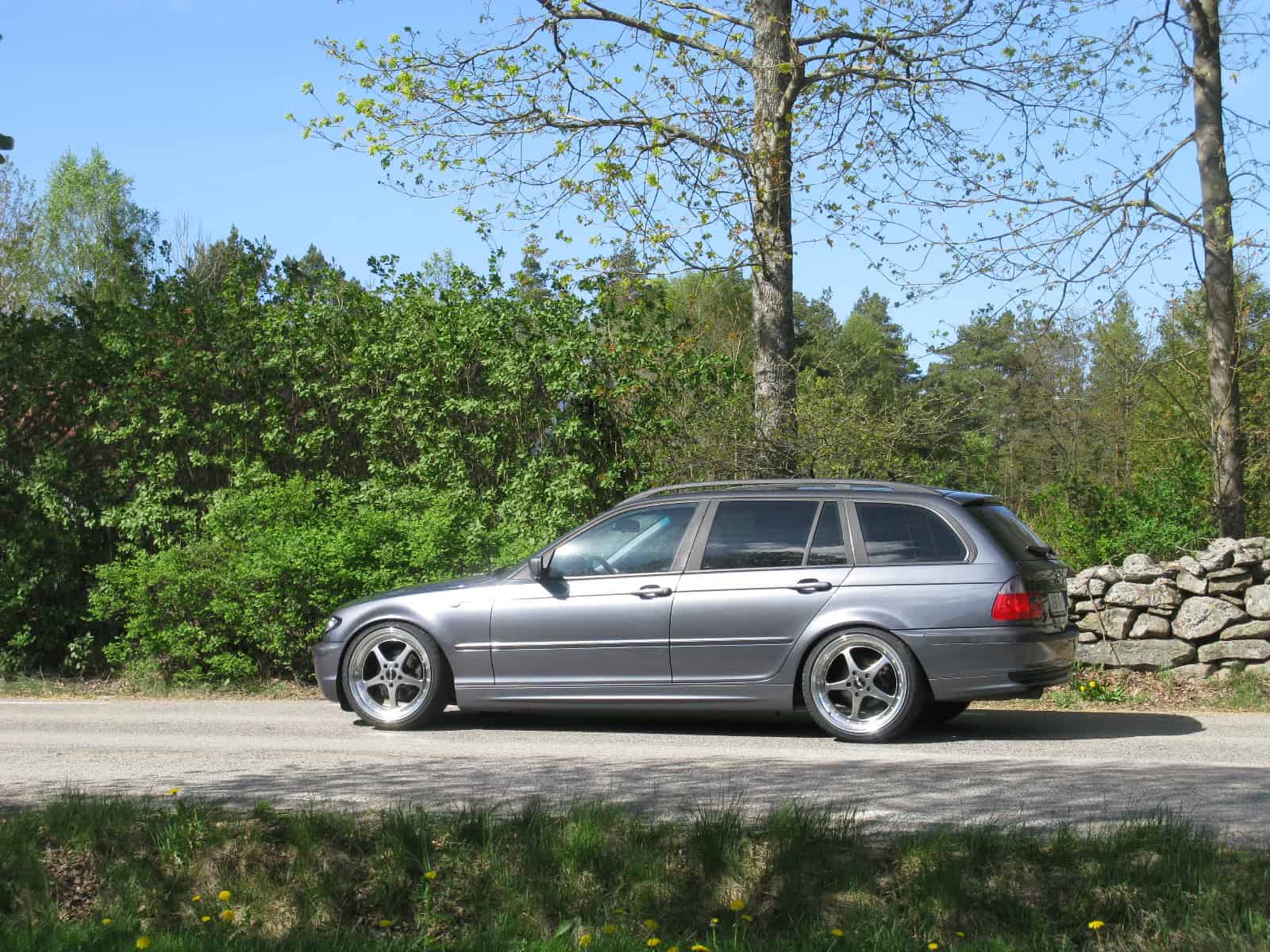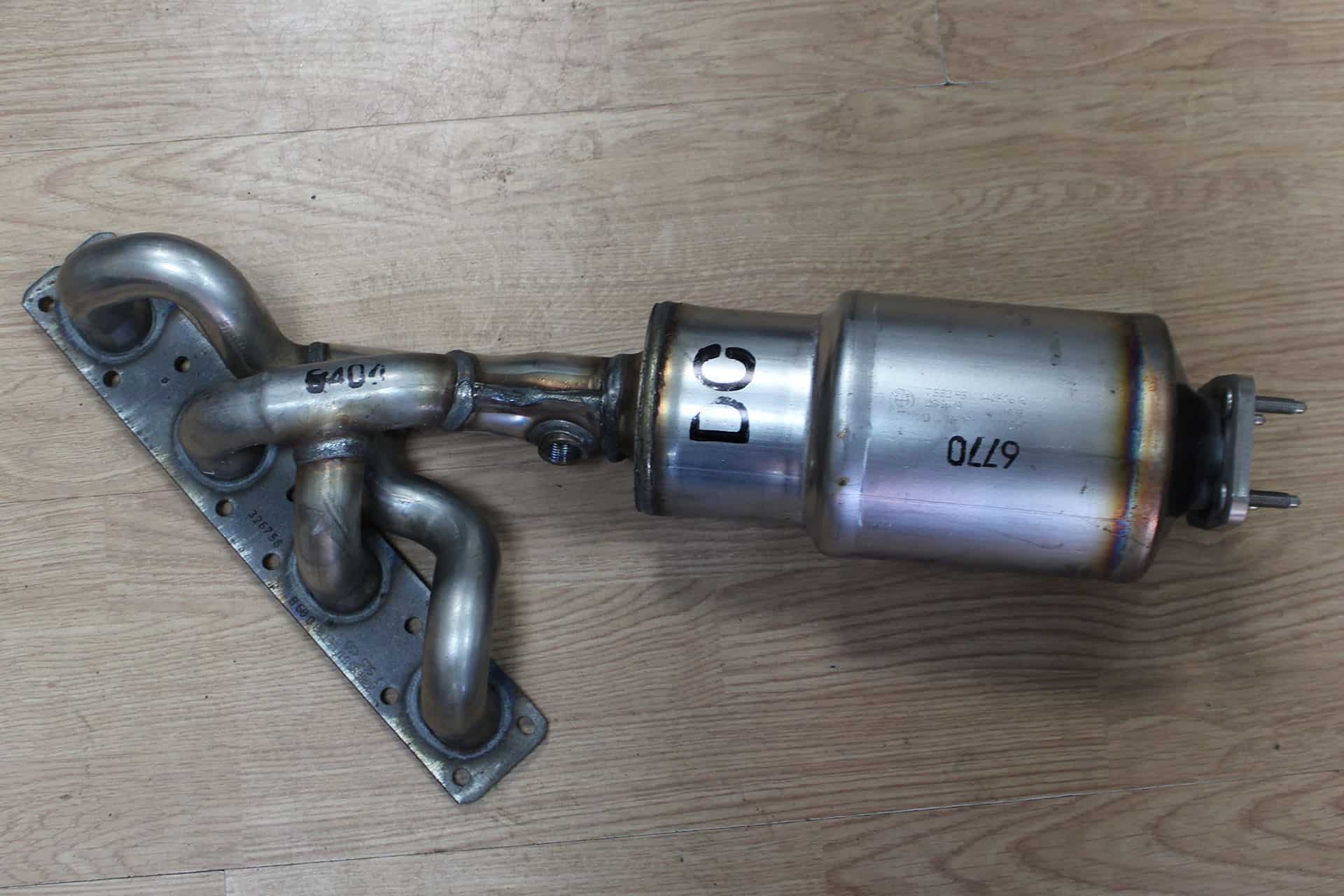Catalytic converter in BMW – problems and repair of catalytic converter in gasoline cars
What is a catalyst?
A car catalytic converter is the colloquial term for a catalytic converter, which is a component of the exhaust system and is designed to reduce the amount of harmful compounds in the exhaust gas. Catalytic converters have been used for many years and their presence in the exhaust system is enforced by regulations(EURO standards). In addition to cleaning the exhaust from harmful substances, the catalytic converter ensures that the engine achieves the set parameters of power and torque. Cars with diesel engines use DPF filters, which we described in a separate article.

Example of a catalytic converter. Here from a MINI car (manufactured by BMW)
Causes of catalytic converter damage in BMW
The catalytic converter is located most often in the lower parts of the chassis. This makes it vulnerable to mechanical damage associated with driving over off-road obstacles. Its sudden cooling, for example, by driving into a deep puddle, can also cause permanent damage. In addition, the service life of each catalytic converter is already determined at the design and production stage. Typically, the mileage is around the 200th thousand kilometers. Considering the average age and mileage of cars in Poland, this limit is already exceeded.
The design-assumed service life of the catalytic converter is also based on its correct operation. This means using:
- the right fuel,
- proper engine oil,
- an efficient ignition and fuel system.
Any failure of these systems negatively affects the operation of the catalytic converter and, consequently, exceeds combustion standards.

Although a puddle looks inconspicuous, it can be a serious threat to a hot catalytic converter | By Mitchel Lensink on Unsplash
Ways to repair a catalytic converter in a BMW
- Replacing the catalytic converter with a new original one – certainty guaranteed by the Munich manufacturer and the highest cost.
- Replacing the catalytic converter with a new replacement – certainty guaranteed by the manufacturer working with BMW. The cost is moderate and the quality is the same as the original parts. We recommend reading the article describing the differences between replacements and originals.
- Catalytic converter regeneration – the certainty depends on the degree of wear of the catalytic converter. The cost is the lowest, but involves “grounding” the car for several days.
We offerall the services mentioned in our service.

BMW 3 E46 Touring | By nakhon100 [CC BY 2.0]
Removal of the catalytic converter
Deliberately in the ways to repair the catalytic converter we have omitted the method of removing it, which is performed by some workshops. The technical consequences are primarily a change in engine performance. Probes and sensors, transmitting data to the engine controller, correct the fuel dosage. The result is a reduction in power and torque and the activation of the failure mode. In newer models equipped with turbochargers, the turbochargers can be damaged.
Legal and financial consequences of removing a catalytic converter from a BMW
Mandatory technical tests of vehicles in Poland from the beginning of 2018 will also include the measurement of exhaust emissions and their compliance with the EURO standard declared in the registration certificate. If emissions are exceeded, the vehicle will be immobilized until it is repaired.
Even stricter is the approach of authorities in other countries we pass through as part of our holiday travels. In many European cities, to enter the segregated zones of large cities, our vehicle must meet a minimum EURO 4 emissions standard. Traffic police in Austria, Italy, Germany or France, among others, have portable devices to measure the quality of exhaust fumes. A negative result means that the vehicle is detained in the police parking lot and can only be taken back on a trailer, after paying hefty fines and administrative fees.
Given the consequences described above, we strongly discourage the removal of catalytic converters. It is much better to solve the defect in a legal, safe and good for the environment way.

Example of a catalytic converter. Here from a MINI car (manufactured by BMW)


